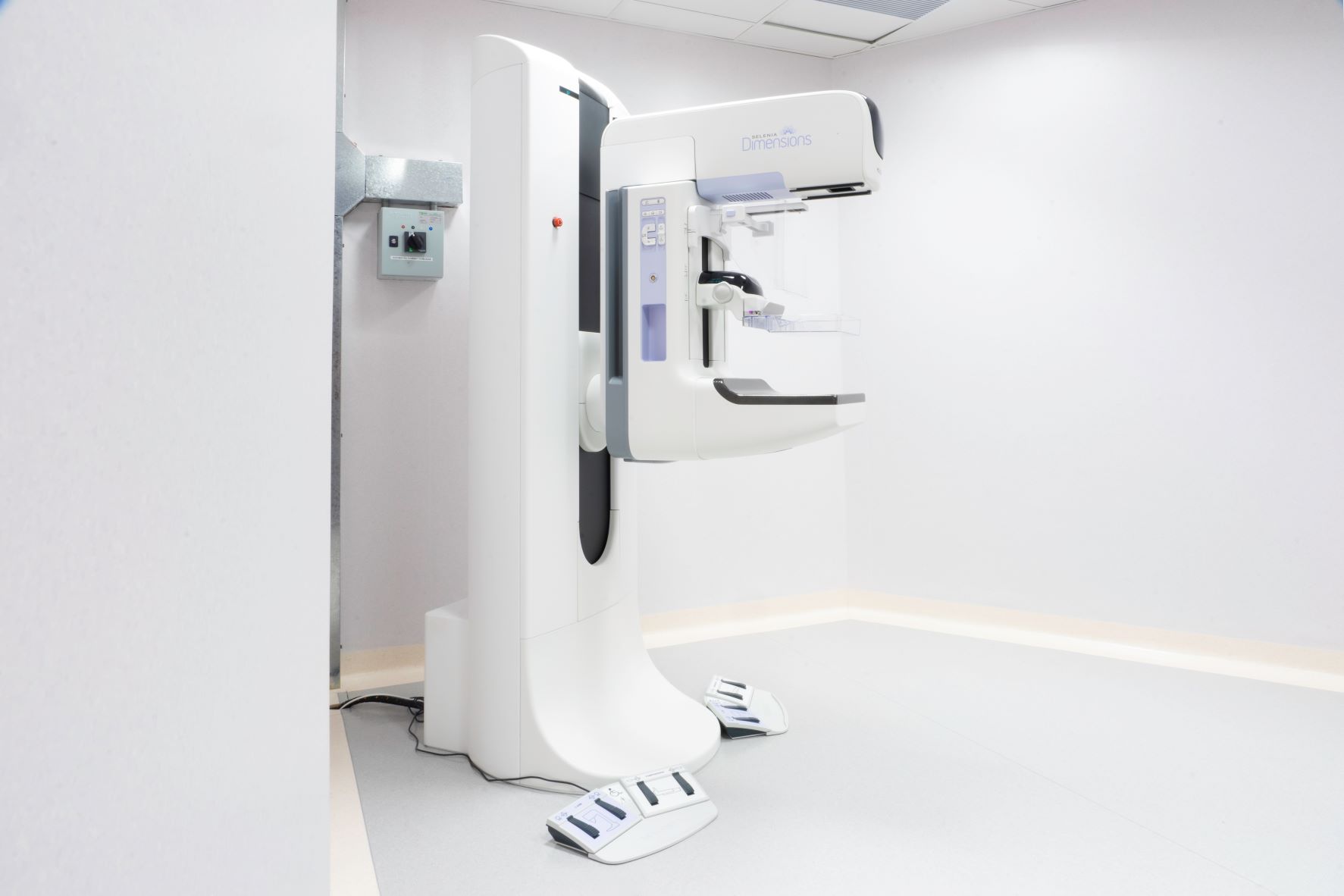
遙距醫療系統

遙距醫療系統

Cancer Radiology and Tumor Diagnosis
Cancer diagnosis involves various methods such as blood tests, urine tests, tumor imaging, and biopsy of cellular tissue to identify symptoms of cancer or rule out its presence. We work collaboratively with medical diagnostic centres to follow up cases and provide advanced medical imaging services for accurate diagnosis of various conditions. In order to achieve accurate and prompt cancer diagnosis, we have incorporated top-notch cancer and oncology diagnostic technologies and equipment, including Positron Emission Tomography (PET), MRI, 3D mammogram, diagnostic ultrasound etc., for different parts of the body. Identifying the stage of cancer through cancer radiology is crucial in designing an appropriate treatment plan. We are committed to providing patients with more comfortable, faster, and more accurate physical examinations, diagnoses, and follow-up services.
Magnetic Resonance Imaging (MRI)

MRI is a non-invasive diagnostic technique that uses a strong magnetic field and radio waves to produce detailed images of the body's internal structures. It is commonly used for tumor diagnosis and to identify the underlying causes of cancer. MRI is a versatile diagnostic tool used to examine various parts of the body, including the whole body, heart, and brain, among others. As it does not involve radiation, it is suitable for examining and diagnosing most parts of the body, including the musculoskeletal and nervous systems.
MRI works by using a powerful magnetic field and radio waves to stimulate hydrogen nuclei (protons) in the body, which emit signals that are processed by a computer to create an image. As water molecules contain protons and the human body consists mostly of water, MRI is a useful diagnostic tool for examining the body.
Advantages of MRI
To provide advanced, accurate, and efficient MRI scans, we use the Siemens MAGNETOM Aera 1.5T MRI scanner, a high-tech device that utilizes Tim 4G technology to improve image quality and speed, and the Dot engine to enhance the accuracy, repeatability, and efficiency of the examination process. In addition, the Aera features a 70 cm-wide open bore design and a total length of only 145 cm, which increases patient comfort and reduces the likelihood of claustrophobia during certain examinations. The new technology also reduces noise levels by up to 70%, further optimizing the examination environment.
Computed Tomography (CT Scan)

A CT scan uses X-rays to create detailed cross-sectional images of the body's internal structures by capturing multiple images of an object from different angles and analyzing them with a computer. Widely used for examining different body parts, CT scans are among the most common medical imaging techniques and are commonly used for diagnosing infectious diseases, cardiovascular diseases, musculoskeletal disorders, tumors, and cancers.
Advantages of CT Scan
The Siemens SOMATOM Drive is one of the most advanced dual-source computer scanners available, and there are currently only three of them in Hong Kong.
Dual-source computer scanners are equipped with two sets of X-ray tubes and detectors, which move around the patient to capture images. This system enables the scanners to capture images at twice the speed of traditional single-source computer scanners.
The SOMATOM Drive scanner incorporates advanced technology that enhances precision, efficiency, and patient safety while maintaining high-quality images. Notably, it reduces motion artifacts and respiratory motion through ultra-fast scan times, low radiation dose, and minimal contrast agent usage. These advancements not only improve the patient experience but also have many applications, including cardiovascular imaging, functional imaging, pediatric imaging, and geriatric imaging.
Positron Emission Tomography (PET) Scan

A PET scan is a functional medical imaging test that provides detailed information about the function of a specific organ or system in the body. It is commonly used to evaluate and diagnose cancer, locate malignant tumors, identify neurological disorders in the brain, and diagnose cardiovascular diseases. Prior to the scan, a radiologist injects a radiotracer into the patient's body. During the scan, a specialized camera detects the radiation emitted by the tracer, and a computer constructs multidimensional images of the scanned area. Radiotracers typically accumulate in diseased tissues, rather than healthy tissues.
PET-CT: Combining Advantages for Cancer Diagnosis
PET scans alone cannot accurately locate detected radiation signals in relation to the organs or tissues that emit them. By combining CT technology with the physiological information provided by PET scans, doctors can accurately pinpoint the location of issues and design effective treatment plans based on the patient's physiological and structural data.
3D Mammography

3D Mammography is a cutting-edge breast imaging technology approved by the US Food and Drug Administration (FDA) in 2011. It uses low-dose X-rays to generate multiple images of the breast from various angles, creating a set of 3D images that provide a more detailed and accurate analysis of breast tissue compared to traditional 2D mammography. The 3D breast imaging is a diagnostic tool used to detect early pathological changes in the breast, such as cysts or tumors, that may not be noticeable to the patient. Radiologists examine 3D reconstructed breast images layer by layer, making it easier to provide an accurate diagnosis.
Why Choose 3D Breast Imaging?
Better Detection. Faster. Less Radiation.
The 3D Hologic Selenia Dimensions technology provides clear and detailed breast images. It detects 41% more invasive breast cancers than traditional 2D mammography, while reducing false positives by up to 40%. The latest breast imaging technology can compress the breast in just 3.7 seconds, while ergonomic design greatly enhances patient comfort. This revolutionary system is the world's only breast imaging machine that can guide biopsy needle placement and has been approved by the FDA for image-guided vacuum-assisted biopsy/excision. This 3D breast imaging technology has a radiation dose similar to traditional 2D mammography. The C-view software can obtain 2D images from synthesized data, reducing patient radiation exposure.
Breast Imaging
The Hong Kong Breast Cancer Foundation recommends routine breast imaging screenings every 2 years for women aged 40 and above. If you have breast cancer symptoms or a strong family history ofMammary Cancer, seek medical assistance and schedule a breast imaging screening. Early detection can improve the chances of successful treatment.
Ultrasound Examination

Ultrasound imaging uses high-frequency sound waves to generate real-time images of the inside of the body. A small transducer (probe) and ultrasound gel are placed directly on the skin, and the echoes of the sound waves are collected by the transducer and used by a computer to create an image. Ultrasound examinations are commonly used to examine organs such as the uterus, pelvis, liver, and kidneys, and to diagnose diseases. They are also used to examine fetuses, including their brains and hips, guide biopsies, and diagnose heart disease. Ultrasound is safe, painless, and non-invasive, and does not use ionizing radiation like X-rays or CT scans.
Ultrasound imaging displays real-time images of internal organs, blood flow through vessels, and fetal activity in the uterus.
Ultrasound technology has advanced to produce three-dimensional (3D) images from two-dimensional (2D) images, while Doppler ultrasound allows radiologists to visualize and assess blood flow in arteries and veins throughout the body, including various organs and regions such as the abdomen, arms, legs, neck, and brain (in infants and children).



